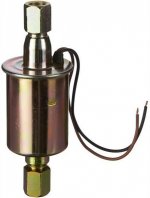Hi everyone, hope someone can help. I recently got my truck on the road and we went for a cruise down the highway for the first time this weekend. The truck is running great around town, idles smooth and pulls hard in fist and second all the way up to 4000 rpm however as soon as I shift into third at that speed the engine will stumble and die. Let off a bit and it picks back up again. It has lots of power below that but hits a wall at 75kph. If I accelerate real gentle I can get up to and cruise at 80kph. Thought it was fuel pump or regulator but I checked both. Pump is putting out about 5.5 psi, and the regulator is set at about 3.0. Engine runs at 2100rpm at 80kph so I figure it should have a lot more to go.
56 F100 with a 223, Clifford intake/header, Weber 38/38 dges, 300 distributor conversion using GM HEI module and Ford TFI coil.
56 F100 with a 223, Clifford intake/header, Weber 38/38 dges, 300 distributor conversion using GM HEI module and Ford TFI coil.
Last edited:


